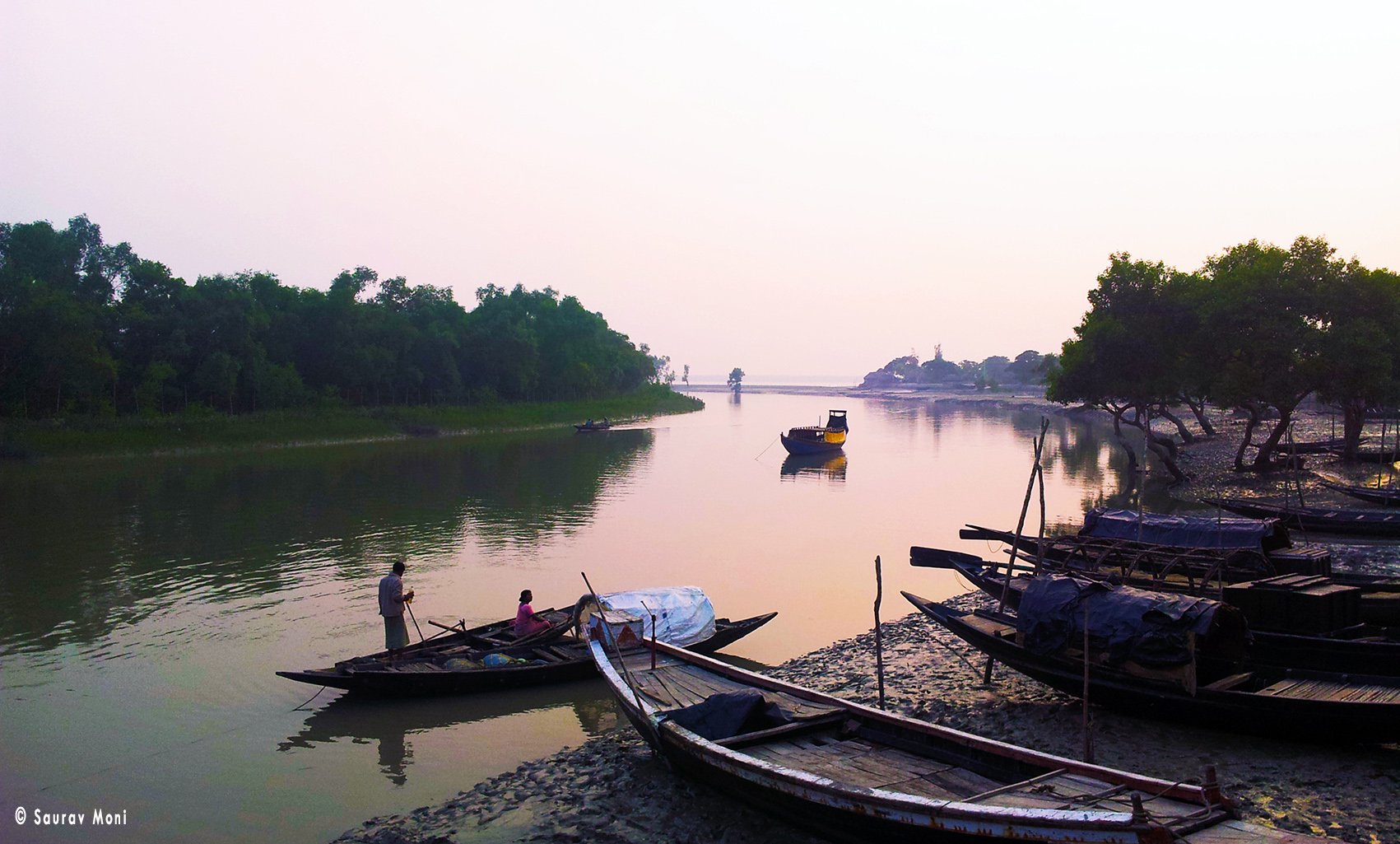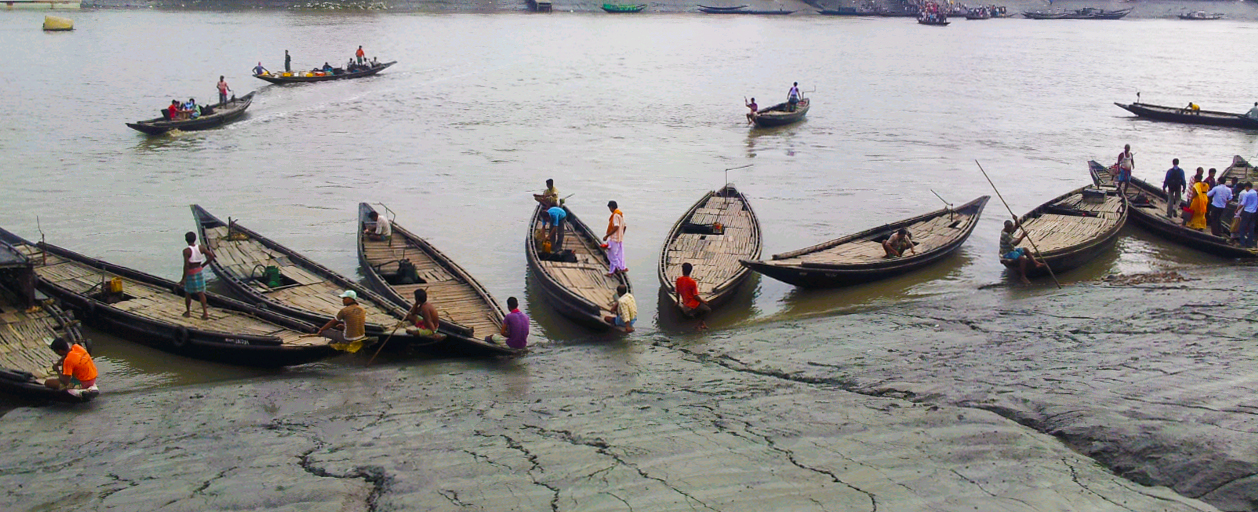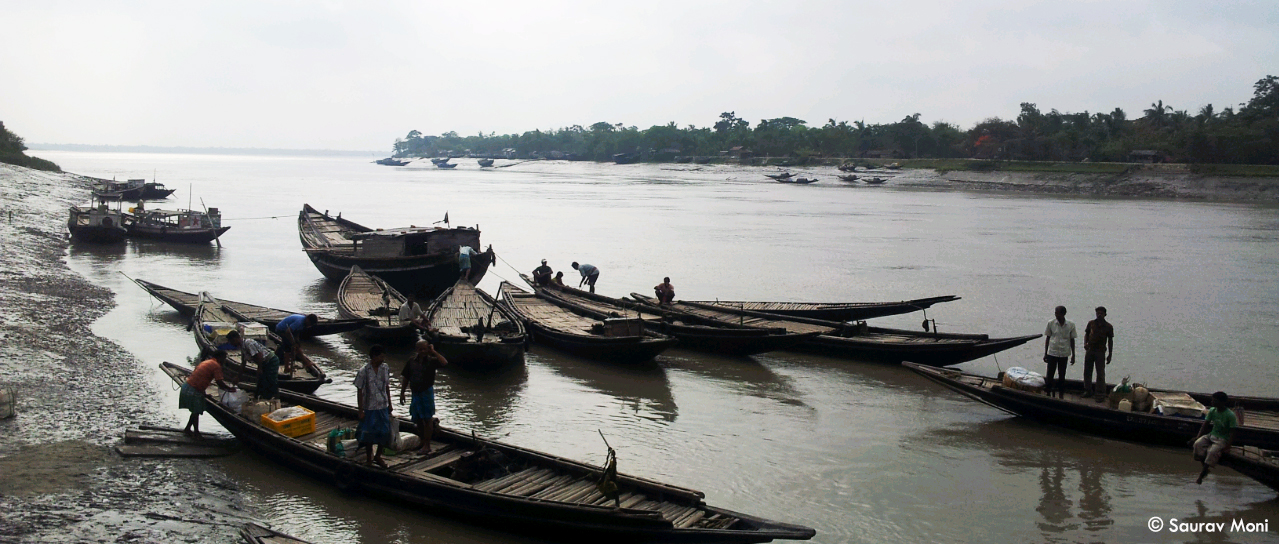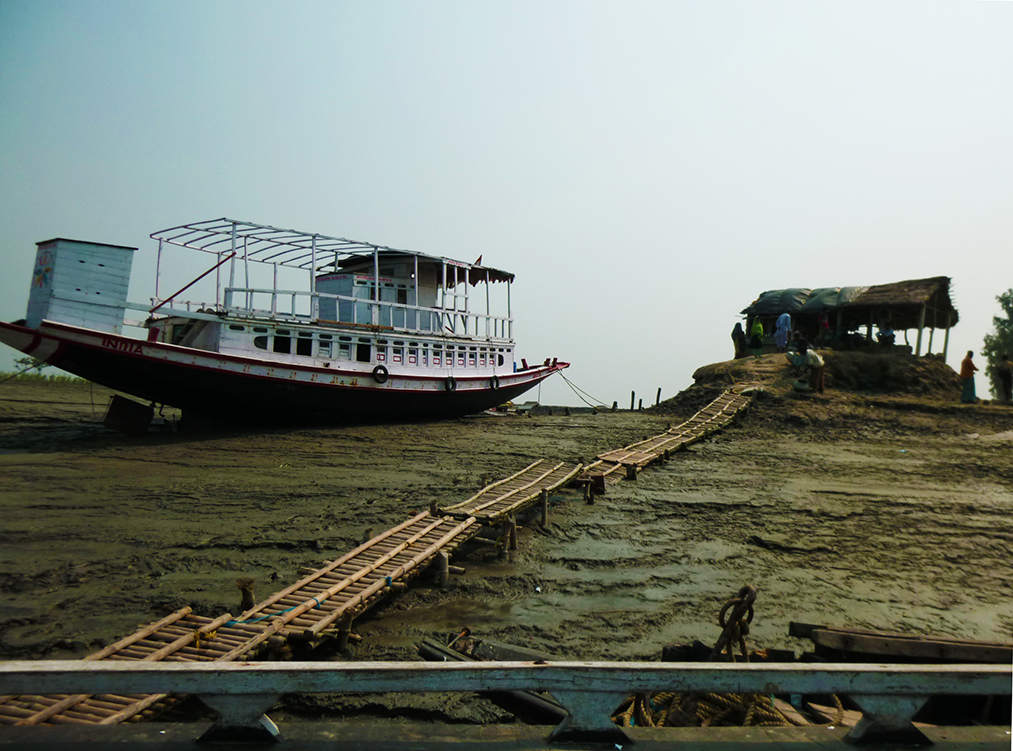Music & traditions
[under construction]
Jasimuddin, Journal of the International Folk Music Council, Vol. 3, (1951), pp.41-44 - 1951
''O Babu Selam Baare Bar'' / Snake Charmer
"O babu, many salams to you
My name is Goya the Snakecharmer,
My home is the Padma river.
We catch birds
We live on birds
There is no end to our happiness,
For we trade,
With the jewel on the Cobra's head.
We cook on one bank,
We eat at another
We have no homes,
The whole world is our home,
All men are our brothers
We look for them
In every door…"
by Jasim Uddin
About the songs
In Bengal, the omnipresence of the river and the course of its meanders decide the fate of everyone. No one would dare doubt its power.
Villagers like to claim that the songs are the voice of the river. They warn travellers against its seasonal violence, the vagaries of its climate; they tell fishermen which channels to travel and boatmen the pitfalls to avoid; they encourage farmers to be patient when the drought endures; they tell stories about the shepherd’s fantasy escapes. To a greater extent, they support hard-working men and women suffering from despair and loneliness and narrate their physical experiences of faith and humility.
Those sari collective work songs with their quick and measured rhythm, sublimate the painstakingly repetitive movements of the rower, giving him strength. Words, rhythms and melodies are often dreamed up during navigation, down twists and turns of varying width and undefined banks. On the contrary, some songs have an almost meditative resonance, echoing from the waves ahead to the sky above. First and foremost, the river is a life path for these men embarked on makeshift boats on a journey to the unknown, separated from their friends and families and forced to be bold to ensure their survival.
Six months a year, during monsoon season, the river overflows and all work must be halted. People keep busy by singing about life and counting the days. Bhatiali songs, which literally “travelled down the current”, have a free rhythm imbued with pathos. They commonly tell of the state induced by love, between illusions and pain, of the fleeting nature of our existence, of the need to place one’s faith in the guru or murshid in order to get past the futility of material gains, of the pledge of commitment as celebrated by the porter of palanquins, or of any other everyday feature of the communities born by the silt of the rivers.
Poetry thus gushes from the water, whose steady movement towards the sea is expressed through infinite variations. Originally, the repertoire was improvised a capella, but it progressively became accompanied by the dotara lute, the banshi flute or the khol drum, the instruments of Bengali kings. Abbas Uddin (1901-1959), S.D. Burman (1906-1975) or Hemanga Biswas (1912-1987) contributed to the renown of this genre, whose golden age occurred from 1930 to 1950. This tradition is slowly dying out, as villagers desert their lands to overcrowd the shanty towns of Kolkata and Dhaka.
Images of Bengal
Treading the lands of Bengal instantly compels the acknowledgement of man’s subordination to nature. This flat country is encircled by the long flowing braid of the Ganges and that of its wild cousin the Brahmaputra river, which continues as the Jamuna, torn to shreds by their tributaries, joining the Padmâ and the Meghna before eventually breaking up into the largest delta in the world. After violently fertilising the plains, the feminine and luxuriant aquatic braid of Lord Shiva separates into thousands of strands forming the Sundarbans archipelago due south. This realm of mangrove forests, ruled by the tiger, is often swept by cyclones, tidal waves and tornadoes. The eastern part of the bay also has its fair share of ordeals: its population must make unusual efforts to adapt to climate change, at its own expense.
Treading the lands of Bengal also means opening a floodgate of mythical, painful or simply ordinary stories, some dating back thousands of years, others more recent. There is a vast wealth of knowledge to be discovered, from the origins of the word Bengal itself, which is attributed to a Dravidian tribe believed to have lived 4,000 years ago, to the causes and consequences of the division of its territory in 1947, to the history of its cities, where thousands of migrants wash up every day. This fascinating region is a kaleidoscope of cultures, languages, beliefs, rituals and everyday chores.
Treading the lands of Bengal is an occasion to discover the poetic resonance of an incredibly rich culture, with unbelievably diverse folk traditions, music and voices. From devotional kirtans[1] chants to the mystical poetry of Bauls and Fakirs[2], the lyrical acrobatics of Rabindranath Sangeet[3], the patriotic ghazals of Nazrul Islam[4], the Jhumur dance of the Santhal people[5] or the celebrations of the Chakma people[6] dwelling on the hills, the list goes on and on. The little known genres of bhatiali and sarigaan[7], on which our project "Echoes from a Floating World" will particularly focus, should not be overlooked.
The songs of the countryside are the voice of the river. Who is he, the Unknown, Unvisible maker of the village tunes, stroking the rivers with his soft-fingered wavy-hands as a player strokes the strings of an instrument, creating the many-coloured songs of Bengal in the bhatiali tunes.
Bengali music and its philosophy are rooted in the present moment, running as deep as the waters of the delta, as fragile and intoxicating as a burst of laughter.
---------------------
[1] Kirtans (from kīrtana, “solemn declaration”, “glorification”) are collectively sung during melas (festivals) or celebrations. With bhâjans, they are one of the most popular spiritual repertoires through the subcontinent.
[2] Bauls and Fakirs are travelling minstrels, mystic singers, beggar philosophers –and a deeply free, altruistic people. No matter if they are born into a Hindu (Baul) or a Muslim (Fakir) village, they belong to a heterodox community of seekers. Amongst others, they sing Lalon Fakir, saint of Kushtia.
[3] Rabindranath Tagore poems set to music. This Bengali man of heart indwelt by an universal spirit (1861-1941) was a writer, a composer, a playwright, a painter, but also a mystic, an educator and a cultural and social reformist –amongst others!
[4] Kazi Nazrul Islam (1899-1976), another polymath, revolutionary philosopher, is considered as a pioneer of the Muslim poetry in Bengal.
[5] Santhal people are the largest tribal community of the subcontinent. Due East, they are recognized as the best representatives of jhumur, a practice sung played and danced which features the daily life (devotional times, joys and sorrows, etc.).
[6] Chakma people (also named Changma) are indigenous people of the Chittagong Hills, in East of Bangladesh.
[7] Bhātiāli and sārīgan are defined below.
Allah Give us Clouds, Give us Water / Allah megh de pani de
The afternoon is blazing hot, the sandbanks endlessly barren,
Bursting chest, parched throat,
Allah give us clouds, give us water, give us shade.
The sky is splintered, the earth is cracked.
The cloud-king is asleep, who will give us water?
The householder has tied his cow and is crying his eyes out
The housewife cooking lentils and gruel is also shedding tears.
The mango-tree leaves are shaking, the jackfruit-tree leaves are falling
The kingfishers craving for water are dying in the lakes.
The beds of trenches, lakes and rivers are fissured,
The water-birds keening for water are dying too.
The pair of pigeons are weeping in their nests,
The withered buds are dropping to the ground.
by the Legendary Folk Singer Abbas Uddin Ahmad.






